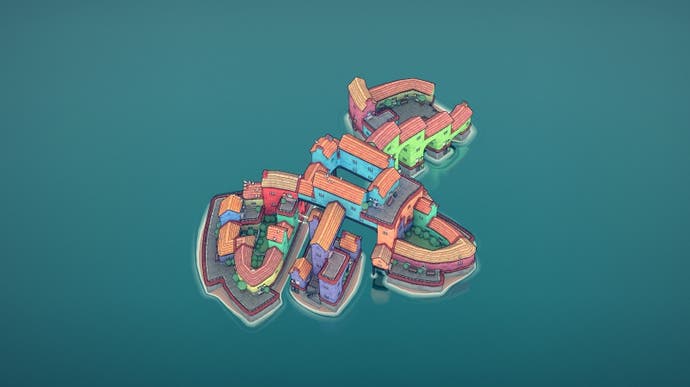Townscaper review - a city-builder without rules
Rippling rest.
What's that? Look closer. It's water: a little eruption of it, a hopping splash of droplets. With each building you place in Townscaper, each new disturbance on its flat ocean, you get a splash of water to go along with the brisk, genial popping sound as you press the button. Pop! A ripple on the surface. And onto the next one.
Townscaper is a simple thing, as simple and clear as the face of a wristwatch. But like the face of a wristwatch, it pulls you in, its own little universe for you to peer down at and ponder for who knows how long. This is a game-like toy, an art tool in which you create - and erase, if you wish - little towns, starting with a still stretch of water and ending with busy centres, suburbs, cathedrals, tower blocks, hamlets, burgs, you name it. One button to place a building, one to remove it. Zoom in, change the colours of the next blocks you put down, drop the whole thing out to white box to make it look truly sculptural, change the position of the sun, take a screenshot, tinker away some more.
It's brilliant.
Why? The immediacy for sure. It's hard not to make something in this game, and once you've made something it's hard not to think of ways you might muddle with it, improve it, expand it, or concentrate it. Pop pop pop! (The sound effects help.)
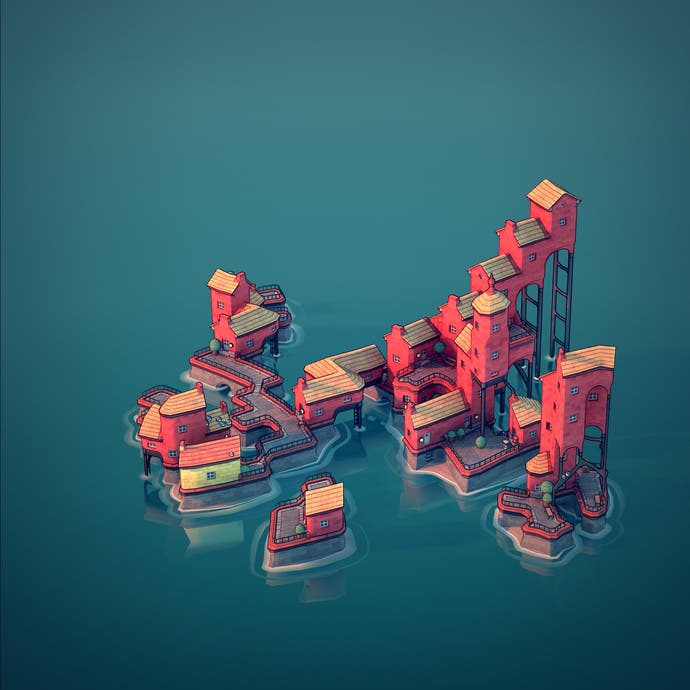
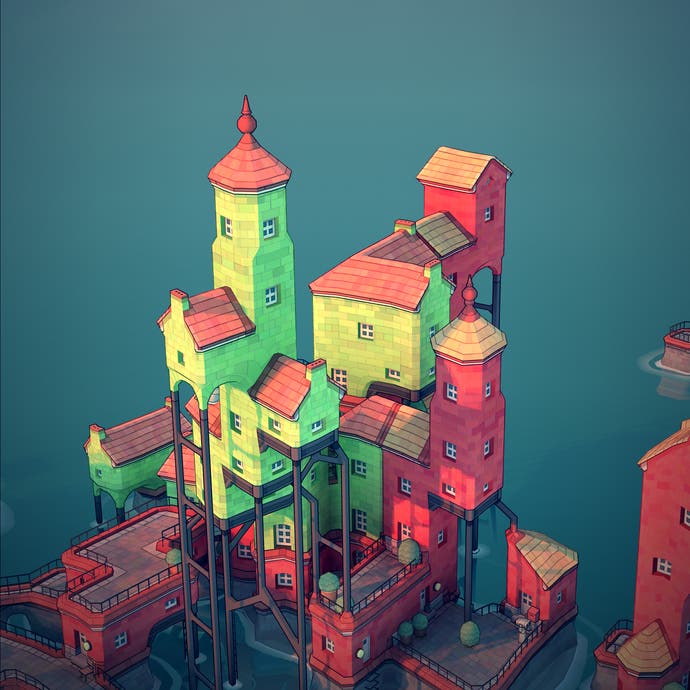
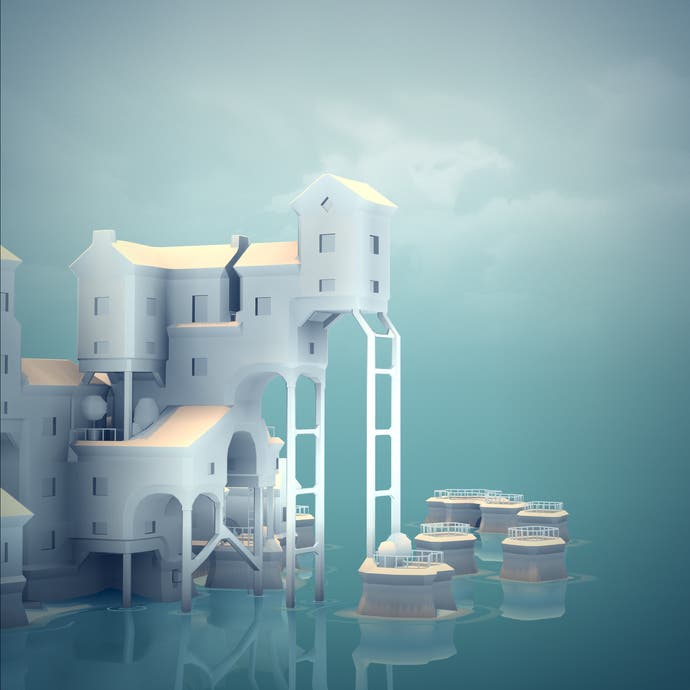
But there's something else too. As each new block pops into existence I'm still surprised by how dynamic everything is. There's that splash of water as a new settlement rises from the seas. But there's also the way a building will switch roofs as it grows, from gable to spire and back again depending on what's growing around it, or maybe the spire will turn the section below it into a little rounded tower, pinched inwards, walls breathing in, as it were, and holding the breath, until you place another section.
You don't get to choose the roof - the game makes a share of its own decisions based on rules you can easily learn. This is why each town you build ultimately feels like a negotiation - between you and the software, you and the environment, each building negotiating with the building you place it next to. Stilts, a bent leg reaching for hard ground, a wall of brick with a little railing, a framework of girders with a little ladder. How lovely. And study it: a sheer face is very different from a gaggle of houses that seem to sprout together, a low city with a hill is very different from a cluster of teetering needles.

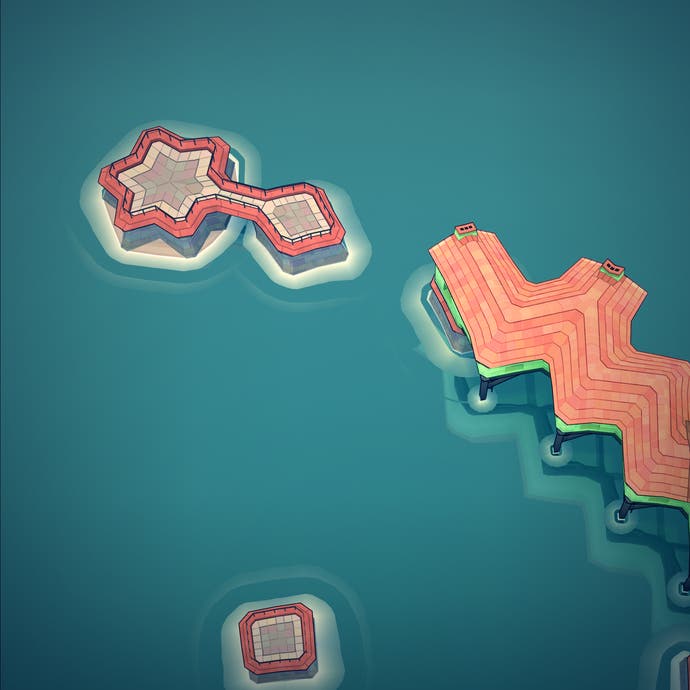
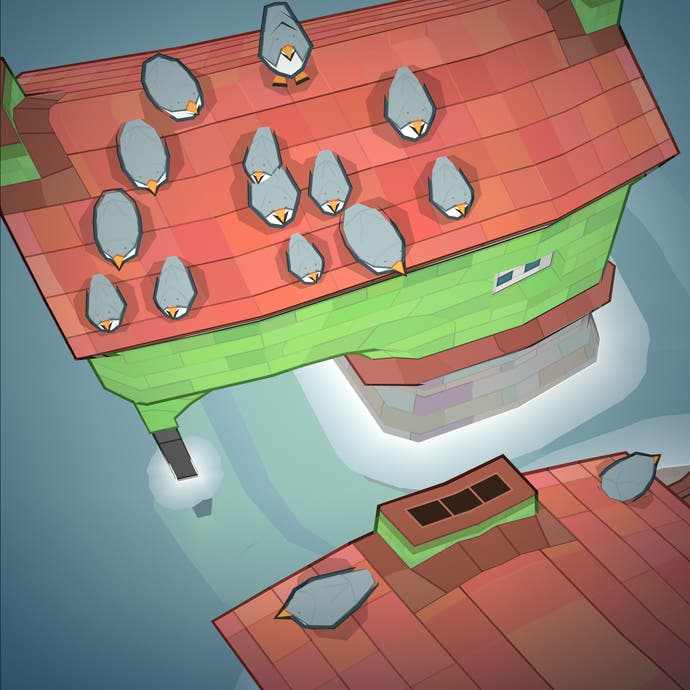
Townscaper is full of quirks like this, right down to the fact that the grid you use to place buildings is not an even grid - it has different shapes, and these shapes in turn affect the blocks you place, giving you slices of cheese, door wedges, the odd star-form plaza. You can learn about the way that Townscaper likes to think, or you can just be surprised by the way it chooses to work with you - either route leads to beautiful outcomes.
And it is beautiful, whether you're creating something ordered and tidy or a snarl of rooftops and dead ends. The challenge might ultimately be to make something that is not beautiful, something that is not delightful. Good luck.
